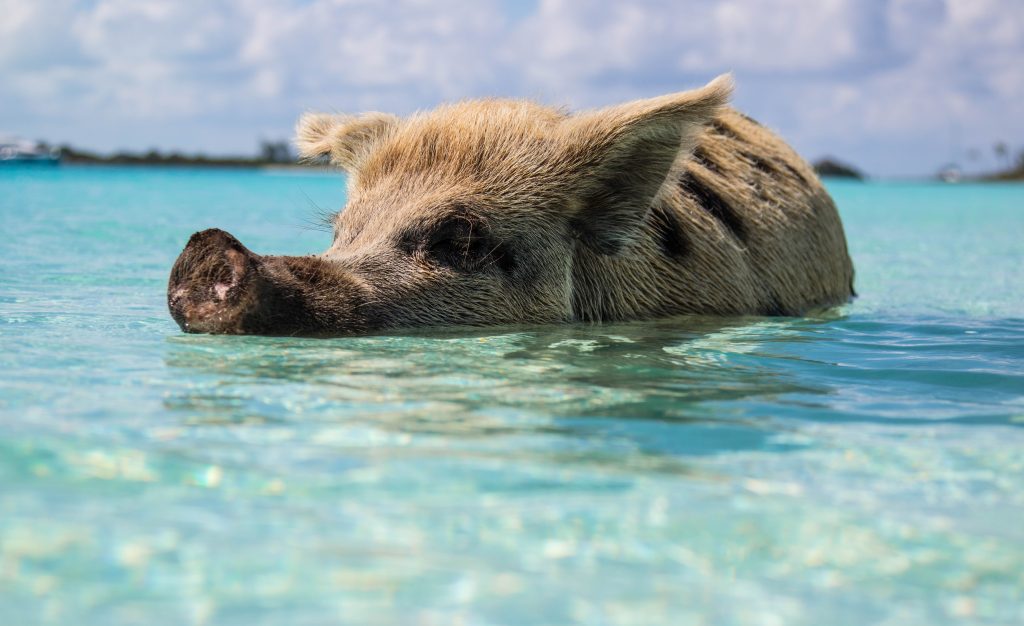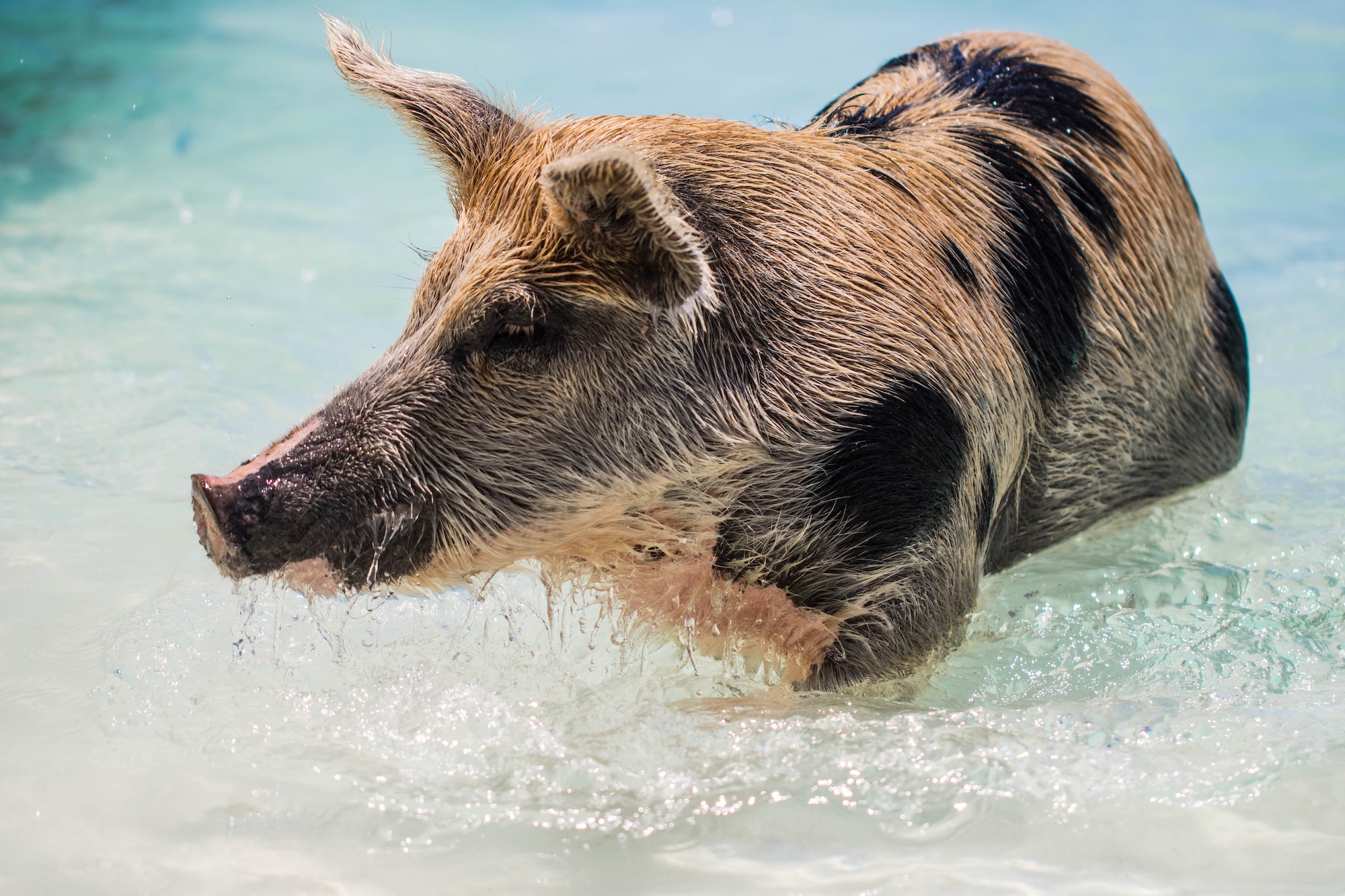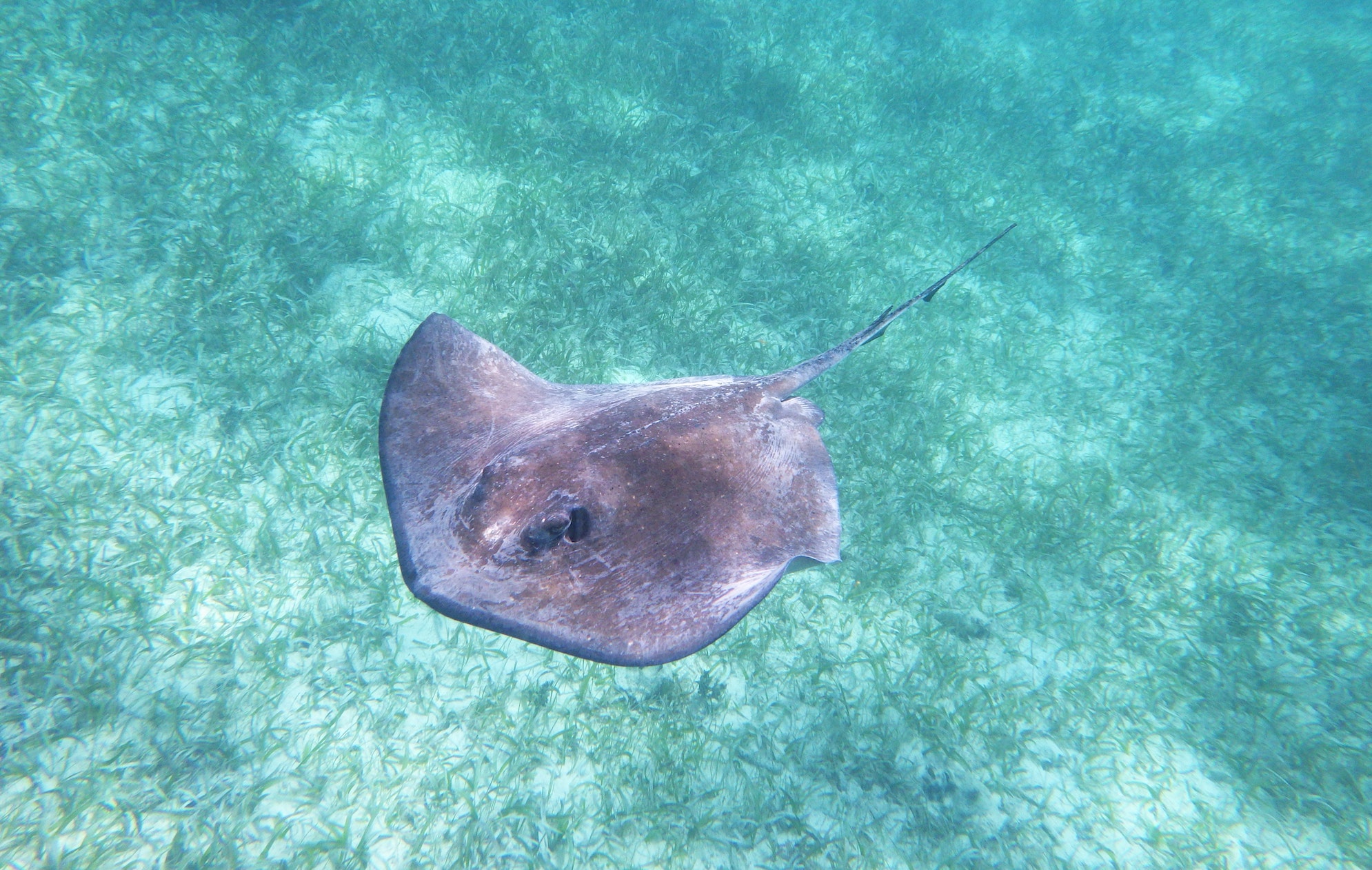
3 amazing wildlife encounters you can only have in The Bahamas
A cool Caribbean archipelago encompassing 700 dreamy islands, The Bahamas has quickly become a favoured destination for Canadians flying south for the winter. Beyond its offering of beaches, sand and spas, The Bahamas is also a haven for wildlife lovers, its waters teeming with fascinating animals like gentle nurse sharks, stingrays and the Instagram-famous swimming pigs.
The island of Andros is home to the world’s third largest barrier reef, which hosts more than 164 species of fish and coral, making it one of the most popular locations in the country for divers and snorkellers. The beauty of The Bahamas goes beyond (and below!) the surface of its beaches. Visitors to the region have the chance to experience and enjoy the thrill of close wildlife encounters and voyages on animal adventures unlike anywhere else.
Meet Exuma’s most famous residents

Most novel of these experiences has to be the renowned swimming pigs in The Exumas. A must-visit photo opportunity, popularly documented across social media, the Big Major Cay swimming pigs are equally adorable and mysterious. How did these intelligent creatures end up living the dream on their own private island, surrounded by crystal blue waters with cascading palm tree canopies?
The story is still unclear. Some share enchanting tales of buccaneers and pirates, their captive porkers making a grand escape, while others speak of farmers seeking a place for their animals to be away from their homes and villages. Whatever the truth may be, be sure to speak to the locals whilst there and see which story rings the most true to you. The captivating swimming pigs have captured the hearts and attention of many and are an important and protected asset of the Bahamian ecosystem.
Swim with the sharks

Over in Compass Cay, located 75 miles from Nassau, the gentle and docile Compass Cay sharks (also known as nurse sharks) await the attention and admiration of human visitors with eagerness not to be outdone by their porcine counterparts. Growing up to 10ft long and weighing anywhere between 200-300 pounds, these bottom dwelling sharks feed on a diet of shellfish and coral and can live for up to 25 years.
Brown in appearance and smooth to touch, with hundreds of tiny serrated teeth, Compass Cay sharks are mostly harmless to humans, but should still be treated like all wild animals, with care and consideration guiding your interactions with them. A unique attribute of the nurse shark is their sucking: they vacuum up sediments with a distinctive high-pitched squeal, which makes them all the more endearing.
Snorkel with sting rays

